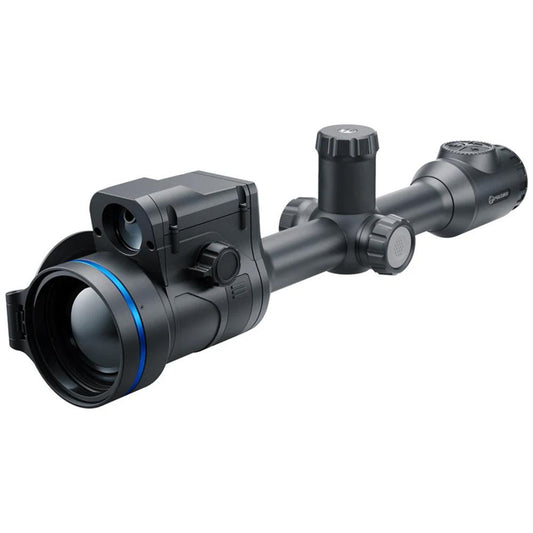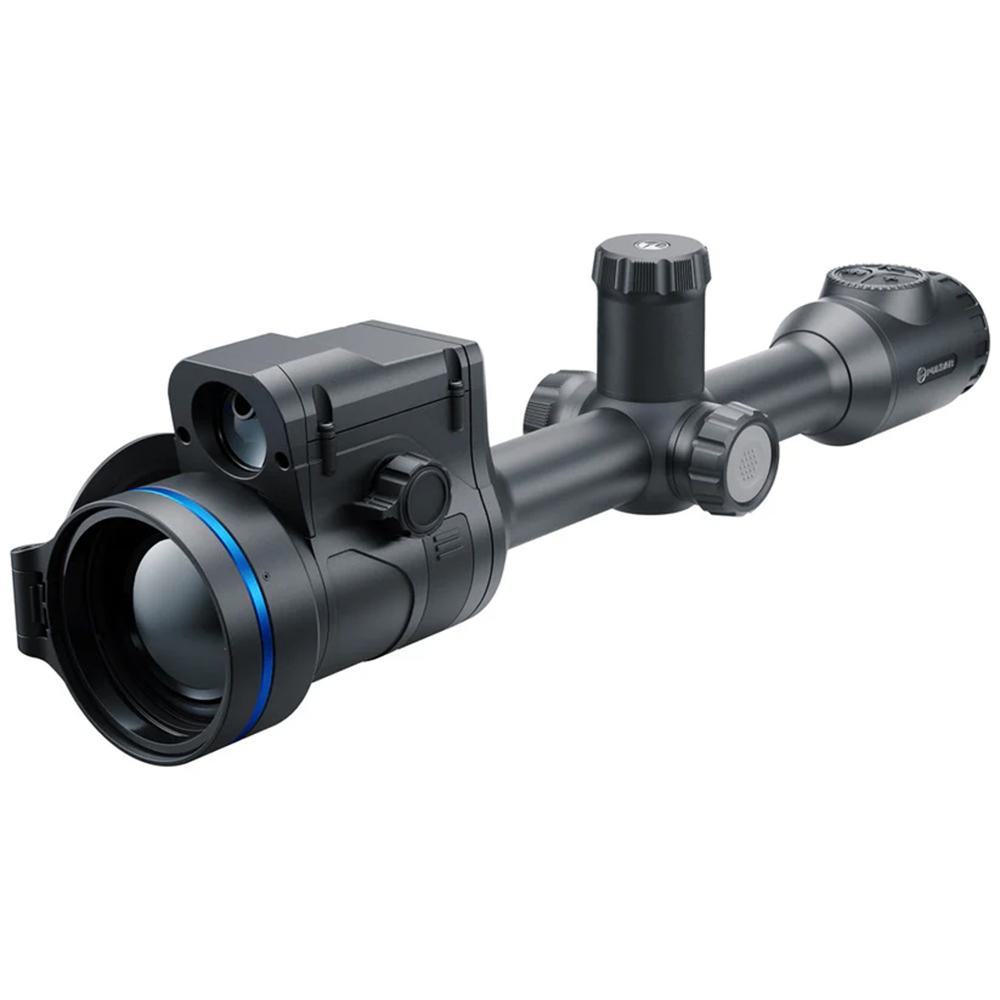

Pulsar Thermion 2 LRF XG60 Thermal Rifle Scope 4-24x60 with Mount offers a versatile magnification range from 4x to 24x, making it ideal for long-range shooting. The 60mm objective lens enhances clarity and increases your field of view, allowing you to effectively track targets at various distances. Designed for precision, this scope excels in low-light conditions, providing clear visibility when hunting in the early morning or late evening.
Durability is a key feature of the Thermion 2, built to perform reliably in harsh environments. Its user-friendly controls and integrated range finder facilitate quick adjustments, ensuring you stay focused on your target. Whether you're in the field for scouting or aiming for that perfect shot, this thermal scope ensures you have the right tools for success.
Features:
- ENHANCED MAGNIFICATION for spotting distant targets effortlessly.
- WIDE FIELD OF VIEW allows for better situational awareness in various terrains.
- THERMAL TECHNOLOGY ensures visibility in total darkness, enhancing night hunting capabilities.
- DURABLE DESIGN withstands harsh conditions, providing reliability when it matters most.
- USER-FRIENDLY INTERFACE for quick adjustments on the go, ensuring you stay focused on the shot.
- ACCURATE RANGE FINDER simplifies distance estimation, improving your shot placement.
- LIGHTWEIGHT CONSTRUCTION ensures easy handling and portability during long hunts.
- VERSATILE MOUNTING OPTIONS for seamless integration with your rifle setup.
Technical Specifications Table
| Feature | Specification |
|---|---|
| Magnification | 4-24x |
| Lens Diameter | 60mm |
| Weight | 2.5 lbs |
| Dimensions | 14.2 x 3.4 x 3.4 inches |
| Material | Aluminum |
What’s in the Box?
- Thermal Rifle Scope
- Mounting Rings
- Lens Covers
- User Manual
Customer Reviews
“Absolutely the best thermal scope I’ve ever used. The clarity is unbelievable!”
“Perfect for night hunts! The range finder feature is a game changer.”
“Sturdy and reliable. This scope makes long-range shooting so much easier.”
FAQ
How well does the Pulsar Thermion 2 perform in low-light conditions?
The Pulsar Thermion 2 LRF excels in low-light settings thanks to its advanced thermal imaging technology, allowing you to spot targets that would otherwise be invisible to the naked eye.
What kind of maintenance does the scope require?
To keep your scope in top condition, regularly clean the lenses with a soft cloth and ensure the body is free of dirt or moisture. It’s also wise to check the mounting and zeroing periodically.
Similar Models
Looking for a unique thermal experience tailored for your adventures? Explore our extensive Pulsar lineup, including models like the Pulsar Thermion 2 LRF XG50 for versatile performance and the Pulsar Helion 2 XQ38 for enhanced portability. Discover our full collection today!
You May Also Like
Here’s some of our most similar products people are buying. Click to discover trending style.






